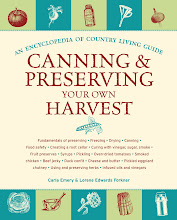It's the time of year to start thinking about what seeds to plant for your spring and summer gardens. Seed packets of everything from sunflowers to squash are covered in instructional lingo for planting that can leave the novice gardener wondering what on earth, or rather where on earth, to plant their produce.
Luckily, Carla Emery is here to help. In the Encyclopedia of Country Living, she lists common seed packet and catalog phrases that will help your plants flourish. With her helpful explanations, you will have a bounty of flowers, fruits, and vegetables to share with your friends.
Common Seed Packet/Catalog Phrases
Certified seed: Seed that, like a registered animal, has a predictable heredity. You can save your own seed from a certified parent or any nonhybrid variety.
Days-to-maturity: A figure that represents the average number of days from planting to first harvest. It’s usually given as a number in parentheses, usually between 28 and 140. Order plants that have a days-to-maturity number that is at least a few less than your usual frost-free period.
Grows in shade: Grows in filtered sunlight, like what comes through tree branches — not absolute shade.
Likes full sun: Won’t grow well in an area where there’s shade even part of the day.
Perennial: A plant that will live for years (for example, asparagus, artichokes, and rhubarb).
Resistant: Able to naturally withstand insect or disease attack better than a nonresistant plant.
Self-seeder: A plant that may become a weedy pest.
Tolerant: Able to put up with a certain amount of disease or pest damage. A “tolerant” plant isn’t as hardy as a “resistant” one. The catalog will indicate what diseases the plant is tolerant of or resistant to by initial. For example, the Beefmaster tomato resists “VFN”: verticillium wilt, fusarium wilt, and nematodes.
Treated seed: Seed that contains a deadly chemical to prevent soil fungi diseases. Do not eat treated seed or feed it to animals. Treated seed might be yellow, pink, or white. Treating the seed prevents diseases called “damping off” and “soil rot.” These are most likely to strike in cool, wet soil early in the spring, but organic seed houses and growers get along without them.
Zone: Find out which USDA zone (1–10) you live in. The catalog often tells you what zone a variety is best suited for, and that’s important information.








No comments:
Post a Comment